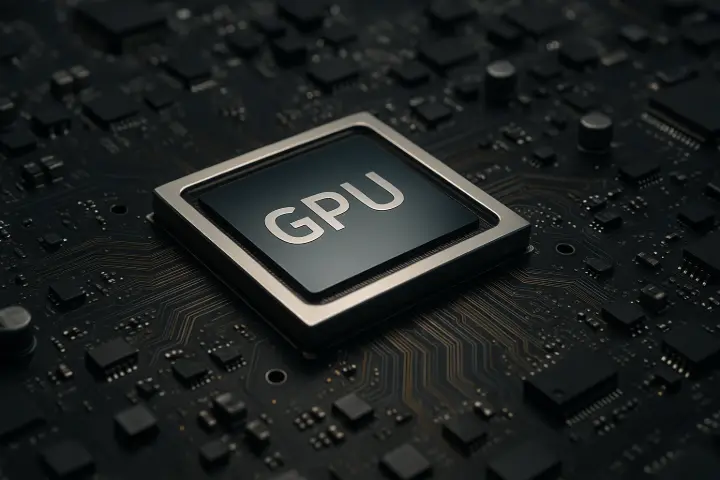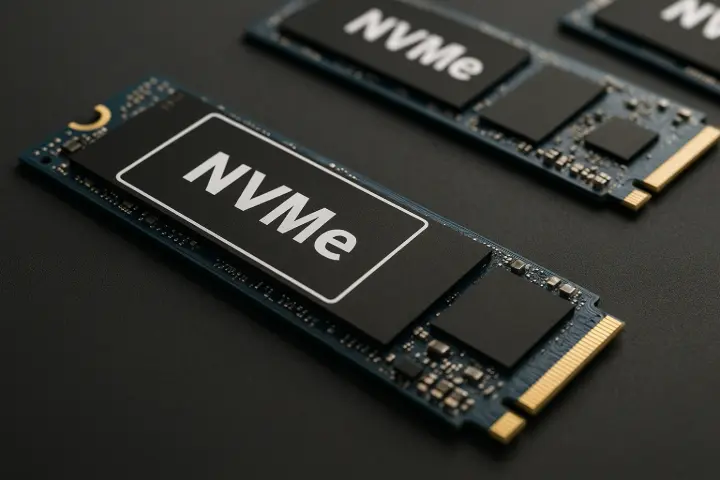The development of artificial intelligence and machine learning has turned computing power into a strategic resource. Deep learning algorithms require massive amounts of data and enormous computational capacity, which means that the efficiency of AI servers directly affects model training speed, prediction accuracy, and overall project ROI.
For businesses using AI solutions — from image and speech analysis to process automation — choosing the right server configuration is not just a technical matter but a financial one. A mistake in selecting hardware parameters can result in a project that runs slowly, inefficiently, or becomes prohibitively expensive.
Understanding key hardware specifications — graphics processing units (GPU), random access memory (RAM), and storage systems — helps assess real needs and select the optimal infrastructure for training and deploying neural networks.
Why Hardware Matters
Deep learning differs from traditional computing because models are trained on massive datasets using complex multilayer networks. These operations require the simultaneous processing of thousands of computations, making server architecture critically important.
- GPU enables parallel computing and accelerates model training dozens of times compared to a CPU.
- RAM allows large datasets to be processed without delays or bottlenecks during data transfer.
- Storage determines the speed of access to training datasets, caches, and intermediate results.
Modern AI projects place demands on servers that would have seemed excessive just a few years ago. Today, they represent the new baseline for competitiveness.
Graphics Processing Units (GPU): The Heart of a Deep Learning Server
GPUs have long evolved beyond their original purpose of rendering graphics. Today, they form the foundation of all computations related to neural networks. Unlike a central processing unit (CPU), which executes operations sequentially, a graphics processing unit can handle thousands of calculations simultaneously. This makes it indispensable for training large-scale models.
Why GPUs Are Critical
Modern AI models contain billions of parameters. Training them can take weeks if using only CPUs. A GPU can handle the same task in days — or even hours. It’s optimized for matrix and vector operations, which are the core of neural network algorithms.
Moreover, GPUs are highly scalable. A cluster of multiple accelerators can distribute workloads across devices, boosting performance without a significant increase in power consumption.
Key GPU Specifications for Deep Learning
When choosing a GPU, it’s important to consider not just the brand and price but also the technical specifications that directly affect training efficiency:
- Number of CUDA cores (or equivalents): the more cores, the greater the GPU’s ability to perform parallel operations.
- VRAM capacity: determines how much data and how many model parameters can be processed simultaneously. Most modern models require between 24 GB and 80 GB of VRAM.
- Memory bandwidth: affects the data transfer speed between cores and memory.
- Support for modern interfaces (NVLink, PCIe 5.0): ensures fast data exchange between GPU and CPU.
- FP16, TF32, INT8, BF16: computation formats that determine how efficiently the GPU performs machine learning operations while maintaining precision.
Current Models and Trends for 2025
The market is dominated by NVIDIA GPUs (A100, H100, L40S series) and AMD Instinct accelerators, both optimized for AI workloads. A major trend in recent years is the shift toward hybrid systems, where multiple GPUs are integrated with high-speed memory and NVMe storage into a unified computing environment. Such configurations enable the training of massive models — including generative and multimodal networks — without relying on cloud resources.

Random Access Memory (RAM): The Key to Stable AI Infrastructure
If the GPU is the engine of neural network training, then RAM is the fuel system that keeps it running smoothly. Without sufficient capacity and speed, even the most powerful GPU cannot reach its full potential.
Why Memory Is Critical
During deep learning model training, large volumes of data constantly move between the GPU, CPU, and storage systems. RAM acts as an intermediary — it temporarily stores input data, parameters, intermediate computations, and cache.
A lack of RAM forces the system to fetch data from the disk, which dramatically increases training time. As a result, the performance of an AI server depends not only on GPU power but also on how efficiently the memory subsystem operates.
Capacity and Configuration
The optimal RAM size depends on the workload. For smaller models, 128–256 GB may be sufficient, but for large datasets and complex neural architectures, AI servers often require 512 GB or more.
A simple rule applies: the total RAM capacity should be at least 2–4 times greater than the combined VRAM capacity of all installed GPUs.
It’s also important to consider the number of memory channels — multi-channel architectures provide faster data transfer. Servers with 8-channel configurations (for example, those based on AMD EPYC or Intel Xeon Scalable processors) demonstrate significantly better stability under heavy workloads.
Memory Types and Standards
As of 2025, the standard for deep learning servers is DDR5 ECC Registered (RDIMM). It offers:
- increased bandwidth;
- lower power consumption;
- automatic error correction (ECC), which is critical for long-running computations.
For high-performance workloads, HBM3 and LPDDR5X memory are increasingly used — typically found in GPUs and specialized accelerators where speed and energy efficiency are paramount.
Why You Shouldn’t Cut Costs on RAM
For businesses, insufficient RAM doesn’t just slow computations — it leads to lost time and wasted resources. A model that trains for 24 hours instead of 8 consumes more energy, ties up equipment, and increases operational costs. Investments in sufficient memory pay off through faster training, more stable performance, and the ability to handle larger datasets without forced limitations.
Data Storage Systems: Speed, Reliability, and Scalability
For deep learning workloads, data storage plays a role just as important as GPUs and RAM. Neural network training involves constant reading and writing of massive datasets, logs, caches, and computation results. Any slowdown in this process reduces overall model performance and increases training time.
How Storage Affects Training Speed
When working with large datasets, the system must quickly load files into RAM and GPUs. If the storage cannot keep up, GPUs remain idle and training slows down. As a result, even a powerful server with top-tier GPUs won’t deliver the expected performance if the storage subsystem relies on slow or poorly configured disks.
Types of Storage Devices
Modern deep learning servers use several tiers of storage, each serving a specific purpose:
- NVMe SSDs – the primary standard for active datasets. These drives deliver extremely high read/write speeds (up to 7–14 GB/s) and minimal latency, making them ideal for streaming data to GPUs.
- SATA SSDs – a more affordable option suitable for secondary data, logs, or backups.
- HDDs – used for archives and historical data where speed is less critical but capacity and cost efficiency matter.
The optimal configuration combines NVMe and HDD drives within a unified system, using caching and automatic load distribution.
Architecture and Scalability
For large-scale AI projects, it’s not enough to choose fast drives — the storage architecture itself must be well-designed. Common solutions include RAID 10 or NVMe-over-Fabric (NVMe-oF), which distribute data flows across multiple nodes and minimize the risk of data loss.
As infrastructures scale to dozens or hundreds of terabytes, distributed storage systems such as Ceph, BeeGFS, and Lustre are increasingly adopted. These systems enable horizontal expansion without downtime and allow parallel data access, accelerating both training and inference.
A deep learning storage system must be not only fast but also resilient. Data loss or corruption during neural network training can cost companies weeks of work and thousands of dollars.

Modern Trends in Deep Learning Server Architecture
Just a few years ago, GPU servers were built as custom configurations. Today, emerging standards reflect best practices in AI infrastructure design and operation.
1. Hybrid Computing Clusters
The key trend is the shift from standalone servers to hybrid clusters that combine GPUs, CPUs, high-speed memory, and NVMe storage into a single system. This architecture allows dynamic resource allocation: GPUs handle training tasks, CPUs manage data preprocessing, and local NVMe drives handle caching.
This approach increases hardware utilization efficiency and reduces power consumption. Such clusters are built using technologies like NVLink, InfiniBand, RoCE, and PCIe 5.0, which ensure data transfer with minimal latency.
2. Energy Efficiency and Thermal Management
AI workloads demand high computational density, making cooling a critical factor. Modern servers employ liquid cooling or hybrid precision-cooling systems to manage heat efficiently. This reduces energy costs and improves reliability during continuous GPU operation.
For data centers, energy efficiency has also become an economic issue: it directly affects the cost per computation and overall competitiveness.
3. Automation and Resource Management
AI infrastructure is becoming increasingly complex, and manual cluster management is no longer effective. A major trend in recent years is the adoption of orchestration and monitoring systems such as Kubernetes, Slurm, and NVIDIA DGX Manager. These tools provide centralized control over task scheduling, workload distribution, and driver updates. As a result, they reduce human error, speed up model deployment, and simplify scaling.
4. Local AI Centers and Edge Computing
With growing data volumes, more companies are processing information closer to its source — at the edge of the network. Edge servers with GPUs are used for local inference, minimizing latency and improving security. In 2025, this approach is especially relevant for industries like manufacturing, logistics, and telecommunications, where response time is critical.
5. Cloud Compatibility and Integration
Even with the rise of local computing, companies are increasingly adopting hybrid models that combine on-premise servers with cloud resources. This ensures flexibility: model training can take place locally, while temporary peak workloads are offloaded to the cloud. Containerization and virtualization technologies make this integration secure and transparent.
How to Choose the Optimal Deep Learning Server Configuration
Successful training and deployment of AI models depend directly on achieving the right balance between performance, stability, and scalability of the server infrastructure.
To ensure that the system is not only powerful but also cost-efficient, several key principles should be followed:
- Balance between GPU, RAM, and Storage. Excess resources without a balanced architecture won’t deliver real performance gains.
- Flexibility and Scalability. The server should support future expansion — from adding GPUs to integrating distributed storage systems.
- Energy Efficiency. Advanced cooling systems and modern architectures (NVLink, PCIe 5.0, liquid cooling) help reduce operational costs and improve reliability.
- Automation and Monitoring. Management tools such as Kubernetes, Slurm, and DGX Manager make operations predictable and minimize human error.
- Cloud Compatibility. A hybrid model allows efficient resource distribution between on-premise and cloud environments, optimizing both budget and performance.
Companies that invest in well-designed AI infrastructure gain more than just faster computation — they achieve a strategic advantage, enabling them to innovate faster, scale projects efficiently, and reduce operational costs.
Key Hardware Specifications for Deep Learning Servers: A Guide to GPUs, RAM, and Storage